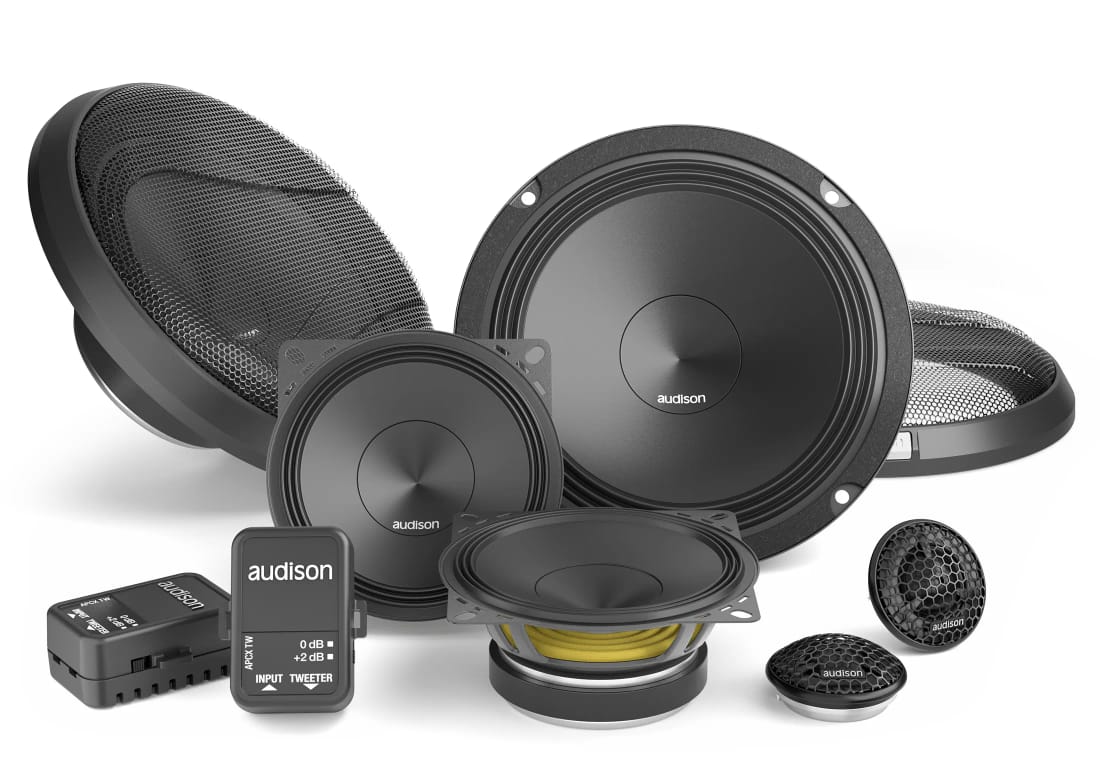When describing car audio speakers, it's important to highlight key aspects like sound quality, power handling, build quality, and any special features. Here’s a breakdown of typical descriptions for various types of car audio speakers: 1. Component Speakers Component speakers are designed to offer superior sound quality by separating the drivers into individual components, usually including a woofer, tweeter, and crossover. Sound Quality: Crisp highs, detailed midrange, and deep, accurate bass. Designed for audiophiles who want precise sound separation. Power Handling: High power handling capacity, often ranging from 50W to 150W RMS, making them suitable for high-powered audio systems. Build Quality: High-quality materials such as polypropylene cones, silk dome tweeters, and rubber surrounds for durability and reduced distortion. Special Features: Adjustable crossovers, tweeter mounting options (surface, flush, or angle-mounted), and some models come with external crossovers for fine-tuning. 2. Coaxial (Full-Range) Speakers Coaxial speakers combine the woofer and tweeter into a single unit, making them easier to install and more affordable. Sound Quality: Balanced sound across all frequencies, though less precise than component speakers. Good for general-purpose listening. Power Handling: Moderate power handling, typically between 30W to 100W RMS, making them ideal for factory radio upgrades. Build Quality: Durable construction with materials like polypropylene or paper cones, and PEI or silk dome tweeters. Special Features: Some models include built-in crossovers, pivoting tweeters for better sound staging, and multi-fit adapters for easy installation. 3. Subwoofers Subwoofers are designed specifically to reproduce low frequencies, delivering deep bass. Sound Quality: Powerful, earth-shaking bass that adds depth to your music. Ideal for bass enthusiasts and genres like hip-hop or EDM. Power Handling: High power handling, often ranging from 200W to 1000W RMS or more, depending on the size and model. Build Quality: Heavy-duty construction with materials like aluminum or Kevlar-reinforced cones and butyl rubber surrounds for long-lasting performance. Special Features: Dual voice coils for flexible wiring options, ported or sealed enclosures for different bass responses, and some models offer shallow-mount designs for tight spaces. 4. Midrange Speakers Midrange speakers focus on reproducing frequencies between the woofer and tweeter, providing clarity in vocals and instruments. Sound Quality: Clear and detailed reproduction of vocals and midrange frequencies. Often used in custom audio setups. Power Handling: Typically ranges from 50W to 150W RMS, depending on the model. Build Quality: Sturdy construction with materials like paper, polypropylene, or Kevlar cones, and rubber or foam surrounds. Special Features: Some models include phase plugs to improve off-axis performance and reduce distortion. 5. Tweeters Tweeters are specialized speakers designed to reproduce high frequencies, adding brightness and detail to your audio system. Sound Quality: Sharp, clear highs that enhance the overall sound quality. Essential for capturing details like cymbals, strings, and vocals. Power Handling: Lower power handling compared to other speakers, usually around 10W to 50W RMS. Build Quality: Made from materials like silk, aluminum, or titanium, each providing a different sound characteristic. Special Features: Swiveling or pivoting mounts for directing sound, multiple mounting options, and some models include built-in crossovers. 6. Super Tweeters Super tweeters extend the frequency response of your system beyond what regular tweeters can achieve, capturing ultra-high frequencies. Sound Quality: Ultra-detailed highs, extending beyond the audible range to add sparkle and airiness to the sound. Power Handling: Typically designed to handle lower power, usually under 50W RMS. Build Quality: Often made from advanced materials like beryllium or exotic fabric domes for precise sound reproduction. Special Features: Compact size, high sensitivity, and sometimes come with inline capacitors to protect against low-frequency damage.
Send Message